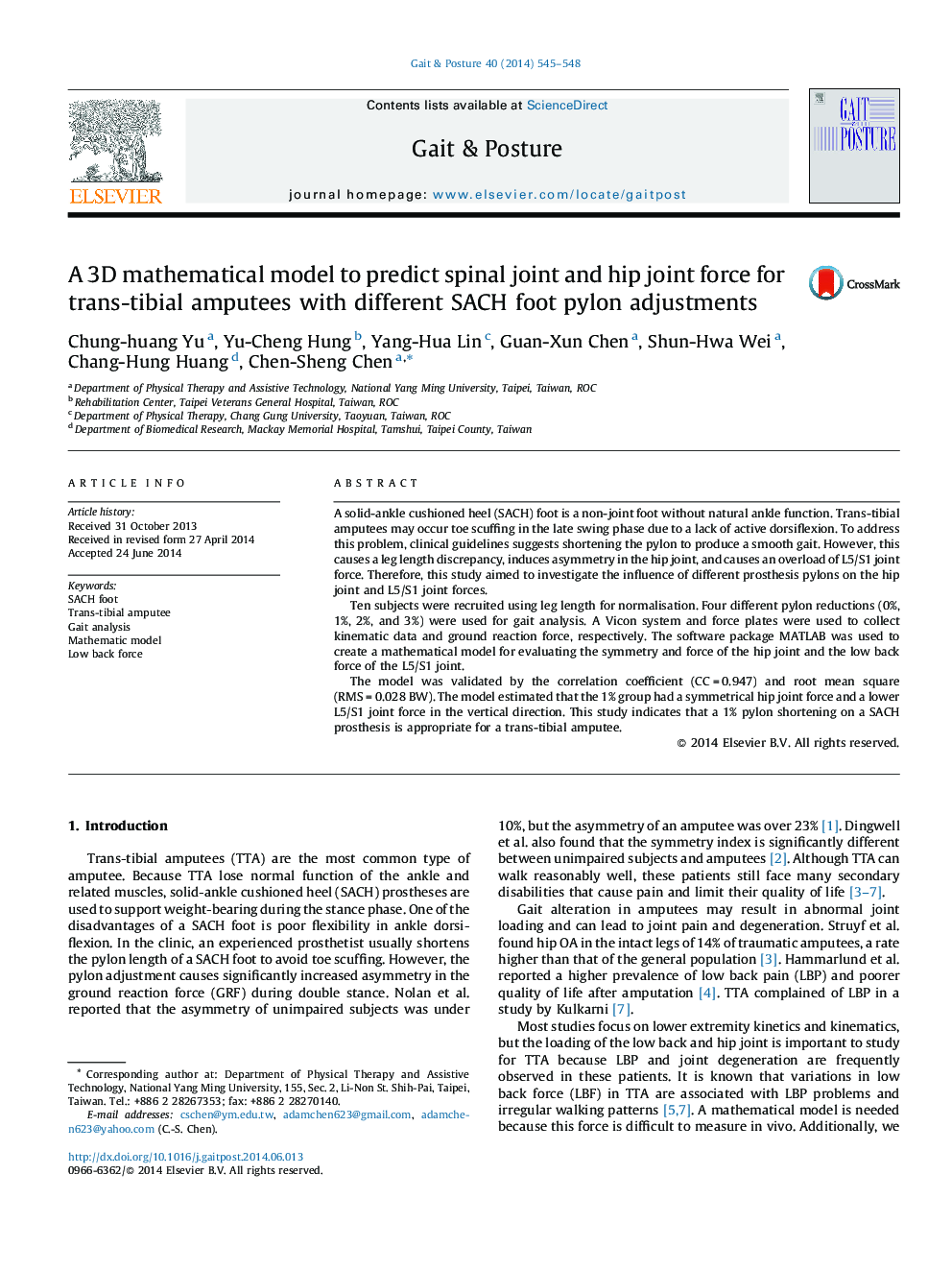| Article ID | Journal | Published Year | Pages | File Type |
|---|---|---|---|---|
| 6205922 | Gait & Posture | 2014 | 4 Pages |
â¢In SACH foot, the intact limb received a greater HJF than the prosthetic limb.â¢Shortening the SACH foot pylon by 1% can get lower LBF and HJF symmetry.â¢Shortening excessive length of the pylon in a prosthesis would increase the HJF and LBF.
A solid-ankle cushioned heel (SACH) foot is a non-joint foot without natural ankle function. Trans-tibial amputees may occur toe scuffing in the late swing phase due to a lack of active dorsiflexion. To address this problem, clinical guidelines suggests shortening the pylon to produce a smooth gait. However, this causes a leg length discrepancy, induces asymmetry in the hip joint, and causes an overload of L5/S1 joint force. Therefore, this study aimed to investigate the influence of different prosthesis pylons on the hip joint and L5/S1 joint forces.Ten subjects were recruited using leg length for normalisation. Four different pylon reductions (0%, 1%, 2%, and 3%) were used for gait analysis. A Vicon system and force plates were used to collect kinematic data and ground reaction force, respectively. The software package MATLAB was used to create a mathematical model for evaluating the symmetry and force of the hip joint and the low back force of the L5/S1 joint.The model was validated by the correlation coefficient (CCÂ =Â 0.947) and root mean square (RMSÂ =Â 0.028 BW). The model estimated that the 1% group had a symmetrical hip joint force and a lower L5/S1 joint force in the vertical direction. This study indicates that a 1% pylon shortening on a SACH prosthesis is appropriate for a trans-tibial amputee.
